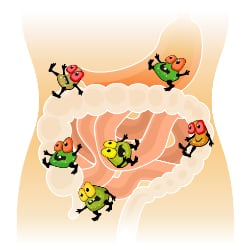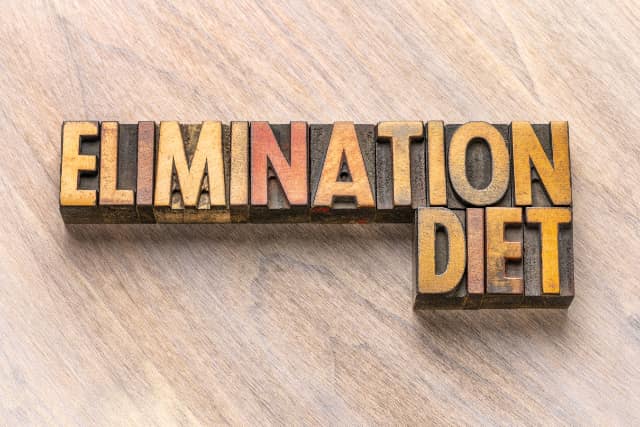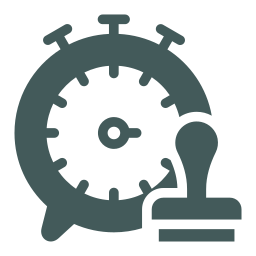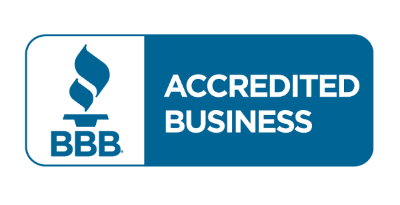
Healing the Gut with an Elimination Diet
Cooking Nutrition
Many of us struggle with maintaining balanced gut bacteria and optimal gut health. Want to know what is causing you tummy trouble? Why not try an elimination diet?

Healing the Gut with an Elimination Diet
Cooking Nutrition
Many of us struggle with maintaining balanced gut bacteria and optimal gut health. Want to know what is causing you tummy trouble? Why not try an elimination diet?
Did you know you have over 100 trillion bacteria in your gut? This collection of good and bad bacteria is often referred to as your microbiome. Having a balanced microbiome is essential for your immune system and overall wellbeing.
Another remarkable fact about your gut is that it communicates with your brain by giving it signals via your nervous system. A healthy and balanced gut microbiome is essential to your overall health.
Our gut tells us it isn't happy via symptoms such as bloating, swelling, gas, diarrhea, discomfort, or even skin problems. These symptoms can be caused by eating certain foods we find hard to digest. But not knowing which foods they are can make it hard to maintain excellent digestive health.
How to solve this? By trying different food combinations and recipes that combine only selected food groups. Read on for some tips on using your diet to help heal digestive health issues.

What Is the Elimination Diet?
The elimination diet is a way to determine which foods in your diet are causing your body irritation or inflammation.
How does it work? By taking out certain foods for a short period of time. This allows you to see if you stop having the reactions you have when you eat everything. It is a way to discover what you are allergic to and what your body is irritated by.
Often people go for allergy blood testing or food intolerance testing to find out which foods don't agree with their system. The elimination diet is another way to understand your body better and how it reacts to specific dietary triggers.
This diet is only ever intended to be for a short time, just a few weeks. It is considered one of the best diets for healing guts and balancing the gut's microbiome.
Who Should Do The Elimination Diet?
Most of us have some slight food intolerances. Food intolerances affect approximately 1 in 10 Americans. Not surprising when so many of the foods in our modern diets are heavily processed and difficult to digest.
The elimination diet could be helpful for just about everyone if they want to improve their gut health.
There are hundreds of different types of diets out there. Many of these make dubious claims about how they can help you reach a goal weight or optimal wellbeing.
If you want to find out which foods are causing your gut irritation, then the elimination diet could be for you.
Before trying a new diet or exercise regime, you should always consult your doctor or a professional dietitian. If you have other underlying health conditions, it may not be best for you to try the elimination diet.
How Elimination Diets Work
You spend about 2 to 3 weeks cutting out certain foods from your diet. These are usually foods that are known irritants and are listed as foods to avoid during this diet. We'll take a look at which foods they are below.
While you are in the elimination phase, you keep a detailed record of how you feel and any symptoms you may notice. This is important so you can keep track of the foods that may cause you issues.
After you have spent 2 or 3 weeks gradually taking foods away from your diet, you need to start to reintroduce them.
Did you avoid bread and then reintroduce it and find you had immediate bloating? This is the type of thing you want to look out for when starting the reintroduction process.
Intense analysis of what you eat and how you feel are essential elements of this diet.
Elimination Diet Food
Which foods should you eliminate? Which foods should you keep as part of your diet during this process?
What are the main foods people eliminate in the initial stages of the diet? Foods that are commonly known to cause digestive or gut issues.
These foods include but aren't limited to:
- Dairy products (milk, cheese, yogurt)
- Meat, fish (especially shellfish)
- Gluten (bread, pasta, couscous)
- Lentils
- Beans
- Soy products
- Nuts
- Seeds
- Citrus fruits such as lemons, oranges, and grapefruits
- Tomatoes
- Peppers
- Eggplants
- Potatoes
- Sugary foods such as cakes, biscuits, sweets, and chocolate
- Honey, maple syrup, and other sweeteners
- Soda
- Coffee
- Alcohol
In general, you should avoid foods with strong flavors and spice. This also includes dressings, relishes, and condiments.
As you can see from the above list, these foods are considered to be less healthy and foods that you should consume in smaller quantities anyway.
Meal Ideas For the Elimination Diet
You may have checked the above list and think, well, what can I eat on this diet?
Don't worry; there are plenty of foods you can eat while undertaking the elimination process. You will eat more simple meals and pay a little more attention to meal planning than usual. Armed with the correct information, you will be able to get it right!
Foods you should eat when eliminating the common foods above include:
- Brown rice
- Quinoa
- Buckwheat
- Leafy green vegetables
- Avocado
- Bone broth
- Turkey
- Salmon
- Coconut yogurt
- Water
- Herbal teas
When you are eliminating the foods in the first phase of the diet, you will eat simple, clean meals. You want to optimize your potential to find out what causes you problems.
For some inspiration on healthy, whole-food recipes to make during your elimination diet, check here.
Try to stick to simple meals that include lean, healthy protein, healthy fats, vegetables, and a gluten-free carbohydrate. Whole foods are great, but remember to skip the legumes.
The simpler the meals, the easier it will be to track which foods aggravate your symptoms.
If you are trying the elimination diet to heal your gut and improve the balance of the microbiome, you could also add in some fermented foods. This could include foods such as sauerkraut or kombucha.
Common Mistakes People Make On The Elimination Diet
If you want this process to be a success, remember that you should meticulously record what you eat. Write a food diary that notes everything you eat in a day and records your symptoms.
Start by writing how you feel at the beginning of the elimination process. Are you sluggish, bloated, gassy? Do you suffer from migraines? Whichever complaint you are trying to relieve through the elimination process needs to be recorded.
You may not even realize specific foods make you feel a certain way until you start to meticulously record what you eat and how your body feels.
The next mistake people commonly make is reintroducing foods too quickly. You need to do it slowly, step by step. Only then will you be able to understand which foods seem to cause you issues.
Don't forget; this is not a diet aimed to make you lose weight. The point is to help you improve the quality of your diet, solve digestive issues and understand food intolerances.
What Are The Benefits of Elimination Diets?
If done correctly, the elimination diet can be a fantastic, holistic way to understand your body and how it operates optimally.
You can better understand the foods your body does not agree with and eat foods that help your body and mind function to the best of their ability.
Everything we do is affected by the foods we eat. If we have a better understanding of how each food affects us personally, it can mean a healthier and more productive life.
You can use the elimination diet to help reduce inflammation in the gut, a weakened immune system, and poor overall wellbeing. You can also use it to find out which allergies and food intolerances you may have and minimize further exposure to those foods.
Use The Elimination Diet To Optimize Your Health
Maybe you are one of the many Americans who have a common food allergy. Perhaps you have a persistent tummy problem that won't go away.
Whatever your reason for trying the elimination diet, it should always be part of a healthy, balanced lifestyle.
You have to fully commit to the process for a few weeks if you want to see results and make positive long-term changes to your lifestyle.
This diet is not some quick fix. It's essential you plan, record, and monitor every step of the way if you want to see results. Remember to always consult your doctor before starting a new diet plan.
Do you want to know more about healthy living and making positive changes to your lifestyle? Check out some of our other health and wellness content.

Jay Todtenbier is an original founder of SupplementRelief.com in 2010 and has operated the business ever since. He is also a tennis instructor and gospel musician. Formerly he spent 25 years in business development, technology and marketing with startups and major corporations having gone through the tech boom in Silicon Valley in the 90s. He became passionate about, and began studying and practicing Wellness as a Lifestyle after experiencing chronic, personal health challenges including depression, auto-immune disorders, and being overweight that impacted his ability to live a healthy, vibrant life. Since then, he has been an advocate for healthier living encouraging others to live better through making small, gradual changes to lifestyle behaviors relating to whole-foods nutrition, stress management, reasonable exercise, proper sleep, and the use of targeted, high-quality supplements.
Learn more about Jay Todtenbier.
-
 Discussion Forum
Questions or Feedback?
Discussion Forum
Questions or Feedback?Ask questions. Share your thoughts. Note that we cannot answer questions relating to specific medical conditions - please refer those to your qualified healthcare provider.
Post a new Comment or Reply to an existing one. Help for using the Discussion Forum.
 Discussion Forum Help
Discussion Forum Help
Comments are displayed in order of the last one posted so the most recent one is at the top and the oldest one at the bottom.
Replies within a Comment are displayed in reverse order with the oldest one at the top and the most recent one at the bottom.
Each post identifies
 who made the post and the
who made the post and the  date and time the post was made.
date and time the post was made.Mouse over the icons for tooltips that explain what they mean.

If you see this icon you can attach an Audio file to your post.

If you see this icon you can attach a Document file to your post.

If you see this icon you can attach an Image file to your post.

If you see this icon you can attach a Video file to your post.
You will see the
 Ban icon (Report Post as SPAM) immediately following the Timestamp of the post. Click this icon if you feel strongly that the content posted is not appropriate and should be reviewed by the Forum Moderator. You will be provided with a confirmation dialog to be sure you wish to submit this post for review. If submitted, the Forum Moderator will be notified to review the post and will determine what type of action to take.
Ban icon (Report Post as SPAM) immediately following the Timestamp of the post. Click this icon if you feel strongly that the content posted is not appropriate and should be reviewed by the Forum Moderator. You will be provided with a confirmation dialog to be sure you wish to submit this post for review. If submitted, the Forum Moderator will be notified to review the post and will determine what type of action to take.Click
 in the upper right corner of this Help modal or anywhere on the web page outside of the modal to exit Help.
in the upper right corner of this Help modal or anywhere on the web page outside of the modal to exit Help.
![]() Session Expired from Inactivity
Session Expired from Inactivity
Do you want to?
9618 Jefferson Highway, Suite D-191
Baton Rouge LA 70809-9636
(888) 424-0032 |
support@supplementrelief.com
* Disclaimer: This page is available exclusively for SupplementRelief.com clients. None of the information on this website is intended to replace your relationship with your healthcare provider(s). Nothing should be considered medical advice. The information, knowledge, and experience shared on this website are the opinions of SupplementRelief.com. This site and its content are intended to enhance your knowledge base as YOU MAKE YOUR OWN HEALTHCARE DECISIONS in partnership with your qualified health professional.
* These statements have not been evaluated by the Food and Drug Administration. These products and services are not intended to diagnose, treat, cure, or prevent disease.
* There is NO GUARANTEE OF SPECIFIC RESULTS for the products or services offered, and the RESULTS CAN VARY for each individual. Any results claimed by our customers are based on individual experiences that are unique and cannot be guaranteed.
FirstFitness Nutrition and NuMedica may be promoted and sold on the internet ONLY by Authorized Resellers who have been approved by and have registered their website domain with these companies. They strictly prohibit, and actively monitor, the UNAUTHORIZED SALE or RESALE of their products in ALL online public shopping portals including Amazon, eBay, and others and into other countries. All products purchased in SupplementRelief.com are for PERSONAL USE ONLY and CANNOT BE RESOLD to others. Please report violations of Reseller Policy directly to FirstFitness Nutrition at 800.621.4348 and to NuMedica at 800.869.8100.
The content and photographs on this website are copyrighted or Licensed Material and may not be downloaded for other than personal use. Republication, retransmission, reproduction, or any other use of the content or photographs is prohibited. ©2010-2024 SupplementRelief.com.
Are you sure you want to remove this item?

